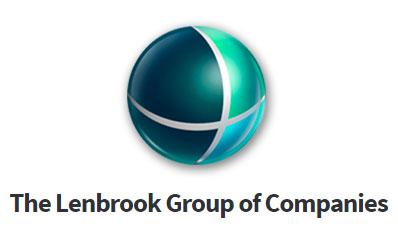
After receiving a stipulation allowing them more time to respond, Lenbrook Industries Ltd, and Lenbrook America, last week filed their response to the Sonos patent litigation they were hit with in June. It was a robust and smart response that clearly communicated that Lenbrook planned to give no ground in this dispute.
While perhaps not quite as audacious as the D&M response when they were first dealt the blow of litigation…Lenbrook offered a smart and savvy response that not only pushed back but seemingly undercuts many of Sonos’ core allegations..and patents.
Sonos v Lenbrook is heating up…who has the advantage?…
Lenbrook did not disappoint in their retaliatory response – strongly worded and cleverly designed to not only deny a Sonos allegation…but also to undercut the very foundation of that allegation. They responded to every point of contention, with a strong push back on almost all of them.
I had to chuckle at the very first line under the heading “Introduction,” which was: “Lenbrook America denies that Sonos invented multi-room wireless home audio technology.” Oh yeah, I thought, this is going to be good.
Oh No You Didn’t!
Next paragraph: “Lenbrook America denies that Sonos reinvented home audio for the digital age. Nor did Sonos singlehandedly establish the stand-alone wireless home speaker system category.” Nope, Lenbrook’s text suggested to the court – such a thought that one company alone invented the new world of wireless audio today is ridiculous.
“Sonos’s claim of ‘reinvention’ disregards the contributions of many other companies that helped conceptualize, innovate, and pioneer connected, streaming and multi-room audio solutions, including Barix (Extreamer), Slim Devices/Squeezebox, Netstreams, Yamaha (Music Cast), Roku, and Cirrus Logic (Cobranet). Wireless and multi-room audio features and functions evolved as natural extension of the consumer audio and the residential installation business that many consumer audio brands had already established. In fact, digital audio and connected audio solutions began at least 20 years before Sonos entered the marketplace.”
Lenbrook Industries Ltd, Answer to Complaint for Patent Infringement and Counterclaims
The First Shot Across the Bow

This first shot across Sonos’ bow sought to shiver the timbers upon which their lawsuit was built. And it seemed smart, if not entirely persuasive on its own. No worries, Lenbrook intended to build upon this opening salvo.
So often in litigation of this nature, one side seeks to set the other up as the bad guy…while they wish to have the judge and jury view themselves as the knight in shiny armor riding the white stallion. Much of this comes from the savviness of the attorney writing the various pleadings – and it can come down to certain subtle textual shadings.
Winning Over the Judge
In the litigation with D&M Holdings over its HEOS line, first launched in October 2014, I saw many examples of Sonos attorneys seeking to sound “reasonable” and – after some seemingly shocking attack from D&M attorneys – carefully and dispassionately “explaining” their position to the court with solid supporting evidence…ultimately winning their point. I believe that Sonos was pretty successful in this play, winning over the judge by making the D&M attorneys look petty and perhaps deceptive.
While each side in a litigation tries to make the other look like the bad guy, it’s a bit of an art to pull that off. As my mother used to tell me, when you throw mud, you often get yourself dirty.
Positioning Sonos as ‘The Bad Guy’
I see signs of Lenbrook attempting to smartly position themselves as the good guys, while Sonos is the big, bad abuser of the system. The section shown below, for example, gives a bit of a taste of that.
“Sonos chose to file a 90-page, 75 exhibit complaint against Lenbrook Industries and Lenbrook America – rather than submit a short and plain statement of the grounds for this court’s jurisdiction and the claims and a demand for relief sought. The complaint includes, amongst a host of exaggerated allegations, a suggestion that, among other things, Lenbrook Industries’ Bluesound technology was somehow copied from Sonos based on one of Lenbrook Industries’ divisions having distributed Sonos products… Lenbrook denies such allegations.”
Lenbrook Industries Ltd, Answer to Complaint for Patent Infringement and Counterclaims
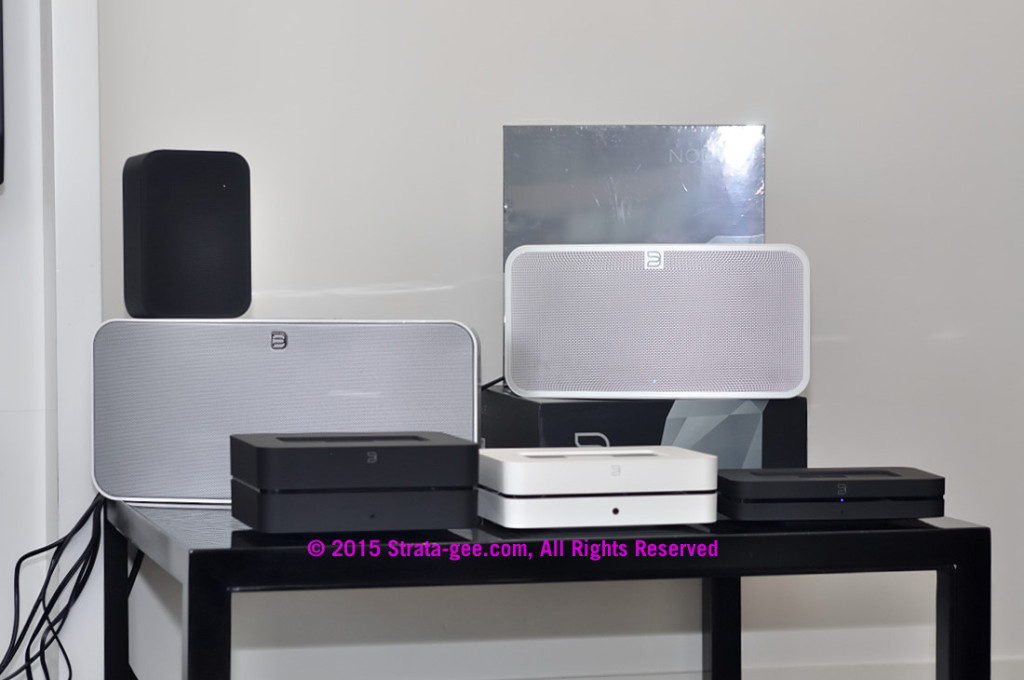
So this section is savvy for a couple of reasons. First, it suggests that the idea that they copied Sonos products because they were a Sonos distributor is ridiculous – even saying that they distribute “many other products” and no such allegations have ever arisen. Second, as lawyers know, courts do not like their time wasted. They do not reward any extra points for needlessly long filings that offer way too much window dressing and way too little hard facts. Like Sgt. Joe Friday on the old TV show Dragnet, judges want: “Just the facts, ma’am.”
Winning With Facts Or Dazzling with BS?
I had pointed out in my original post on this lawsuit, how unusually long and detailed the original complaint was. Perhaps this was to aid comprehension…or perhaps it was to dazzle the court with BS. Normally, these first filings are pretty perfunctory as they primarily serve to do little more than to pull the dispute into a court for eventual resolution. After facts are established – usually after a period of several months known as “discovery” where each side gets to see whatever real evidence the other side holds – then various motions are crafted, or an amended complaint is filed with a strong factual basis for the the court to decide or otherwise take action.
Lenbrook informs the court that it has a “40-year history of innovation in the audio industry” through its NAD and PSB brands. Clearly, it is a little questionable, says the response filing, that Sonos alleges that Lenbrook brand Bluesound products “somehow compete with Sonos by including quotations from industry publications that are taken out of context and presented in a misleading manner, when Sonos itself has never described Bluesound as a competitor.”
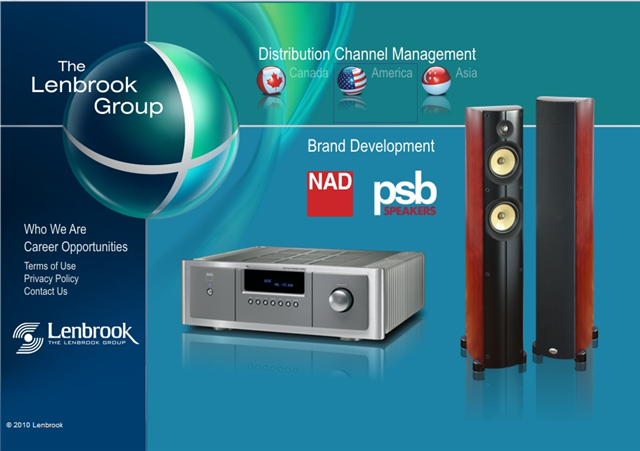
Sonos Has Never Identified Bluesound as a Competitor
Sonos, as a public company, has in various public filings disclosed which companies compete with its line of products. Lenbrook tells the judge that Sonos has never named Lenbrook or Bluesound as a competitor. Never…in any filing.
Furthermore, the response suggests it is “puzzling” that Sonos would make such a suggestion in this filing. Because while it is true that both companies offer products in the connected audio market, “Bluesound is a premium high-resolution niche market audiophile brand, competing in an entirely different sector of the digital audio market than the sector in which Sonos competes. Sonos primarily competes with other less expensive, more broadly available, and more widely recognized retail audio brands such as Apple, Amazon, Google, Samsung/Harman, BOSE and Sony.”
Trying to Convince the Court They Don’t Compete
This looks to me like another potentially beneficial argument. If Lenbrook can convince the judge that these two companies don’t compete, then it is possible the judge will dismiss infringement claims outright. But even if he finds they infringed on Sonos’ patents, if he believes them to not be competitors there may be little or no direct financial penalty.
It is also smart for Lenbrook to reposition the matter as one that makes more sense for Sonos to battle massive players like Apple, Amazon, Google, Samsung, Bose, and Sony. While Sonos may be planning such actions, those players are well financed and employ some of the finest litigators in the US. Such cases are likely to tie up Sonos for years. Perhaps this is why Sonos has chosen to start with smaller players like D&M’s HEOS line and Lenbrook’s Blusesound line.
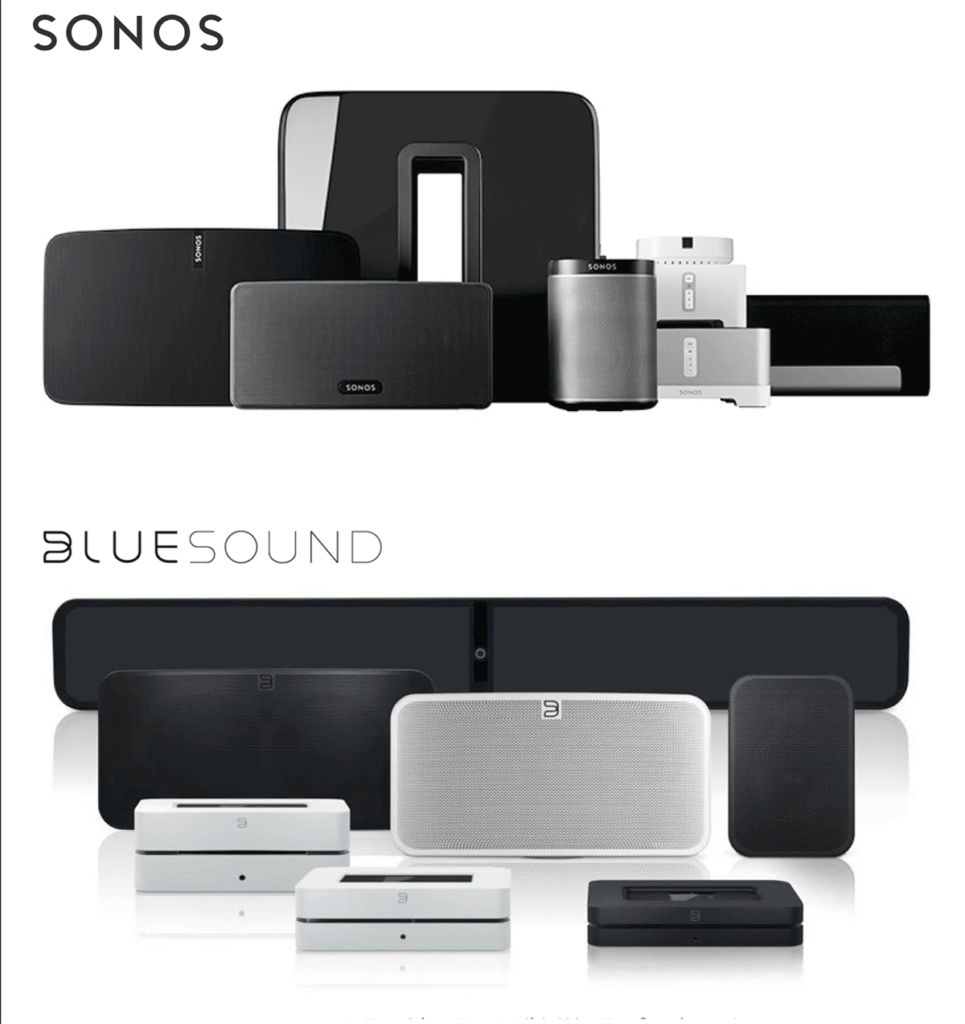
Big Guy Beating Up On a ‘Much Smaller Company’
But in regards to Lenbrook/Bluesound, the response says: “Sonos’s unnecessary and overreaching allegations concerning Bluesound in its complaint are especially puzzling because they are being made against a much smaller company, with a correspondingly much smaller customer base and sales.”
Look judge, Sonos is the big, bad monster here…trying to stomp on an ant… We’re just little old Bluesound over here minding our own business and not hurting anyone.
After 30 Years of Innovation, Bluesound is a ‘Natural Evolution’…Not Stolen Goods
Reminding the court that Lenbrook brands NAD and PSB have been launching innovative electronic and speaker products for almost three decades before Sonos even existed, the company notes that Bluesound was the “natural evolution of those predecessor premium, niche brands.”
The response further says that, “…the speaker acoustics team at PSB Speakers and the electronics/amplifier design team at NAD Electronics have been collaborating on active speakers, subwoofers, and multi-room audio solutions for decades. PSB also developed a host of horizontal center channel speakers that provided the foundation for products in the Bluesound PULSE family of all-in-one speakers.”
Firing the Big Guns
Then, Lenbrook lobbed a bigger shell – offering some specific evidence that Sonos’ patents are not valid. For example, of the “258 patent”, the filing claims that it “could be challenged based on, among other evidence, patents owned by Philips (U.S. Patent No. 7,269,338 (‘Janevski’)) and a computer systems company (Dell) (U.S. Patent No. 5,642,171…” And even Sonos’ own expert (Roman Chertov) has pointed to “two synchronization patents owned by Implicit LLC…”
The filing goes on to say the the “‘258 patent could also be challenged based on other prior art, including, as further discussed below, the Barix Extreamer invention, which included synchronization capability and was offered for sale and demonstrated at multiple shows in the Unites States in 2002 and 2003, at least one of which was attended by Sonos representatives, but which Sonos did not disclose to the patent examiner during the course of the ‘258 patent prosecution.” [To see a full account of the patents that Sonos is alleging that Lenbrook/Bluesound infringed, see my previous report on this lawsuit.]
Sonos ‘Did Not Disclose’ an Important Fact
See what Lenbrook did there? They pointed out to the court that Sonos representatives were at presentations of the Barix technology well before Sonos launched similar product and they “did not disclose to the patent examiner” that important fact. Clever…
Because Sonos’ original complaint was 90 pages long…and Lenbrook was forced to respond to it all, their response runs 66 pages with many more pages of exhibits on top of that. I won’t go through all of this on a point-by-point basis. However, like any well-rounded legal pleading, Lenbrook lays out their response and then repeats them for all of the other related claims.
Lenbrook Suggest Sonos Copied Bluesound
What I will do though, is hit the highlights and major themes of the Lenbrook response, much as I have done above. And one of the things they did was to educate the court on how many companies in our industry – including Sonos – operate. The filing points out to the court that Sonos chief product officer Nick Millington has testified that their company has a practice “of looking at what other technologies were being used by competitors and tearing down competitive products.” This is generally known in the industry as”reverse engineering” and was alluded to above in Lenbrook’s discussion of the Barix technology which emerged pre-Sonos.
The filing goes on to note early Sonos products ZP 100 and ZP 120 include a “two-chip architecture similar to that used in the Barix Extreamer for data networking and decoding of audio streams, even though a single-chip solution for data networking and audio decoding was feasible and available as early as 1999. In fact, after Bluesound was launched using a single-chip NXP architecture, Sonos eventually adopted a single-chip architecture with an NXP processor for its Sonos One and later products.”
This suggests that Sonos may have copied Barix then…and possibly Lenbrook now. In fact, Lenbrook’s filing goes on to note that the Sonos AMP launched in 2018 includes a digital amplifier design “very similar” to their own Bluesound Powernode launched in 2015. They point out some other examples of other similarities to certain Bluesound products with later Sonos models as well.
Sonos Did Not Invent ‘Family Photo’ Marketing
The response goes on to discuss another of Sonos’ “unnecessary and unfounded allegations” that Bluesound copied Sonos’ “family photo” marketing style. As even I noted in my report on the filing back in June 2019, it is ludicrous for Sonos to suggest they invented the family photo shot in their marketing. Almost any brand I can think of has at one time or another included a photo in marketing materials of their product family.
Or as I said it then:
“This comparison shown above certainly isn’t conclusive, but some might consider it slightly problematical for Lenbrook given some of the physical similarities. On the other hand, in the image shown below, Sonos attorney’s seek to show that Bluesound directly copied their marketing materials by utilizing a “family” shot of components.
However, this suggestion to me is unpersuasive as these types of product line or family shots are not at all uncommon in our industry. I don’t think Sonos invented this type of photo layout.”
From: “Denon Defeated, Sonos Sics Lawyers on Lenbrook”
Wow! Lenbrook Lawyers Read & Reference Strata-gee
In a section of their response dealing with the issue of whether Bluesound competes with Sonos, I was surprised to see a reference to a Strata-gee.com article written around the time of the launch of Bluesound. In this article, I noted that Bluesound was clearly positioned above Sonos, saying: “Bluesound is designed to be positioned above brands like Sonos in terms of price and performance…but tuck underneath the higher-end solutions such as those offered by NAD and others.”
Clearly, Lenbrook finds these assertions of the different market positions of these two brands as pertinent to their case. Will the court find that compelling as well? That remains to be seen.
However, Lenbrook goes on for several more paragraphs to make this point as clear as possible – noting, for example, that Sonos is sold through many channels of distribution, including through “large format and multi-location national and regional retail stores…” as well as on the internet. Meanwhile, Bluesound “is marketed and sold to audiophiles primarily through higher-end independent dealers that can provide physical demonstrations and comparisons.”
Did Bluesound Copy the Design of Sonos Products?
Sonos’ complaint suggested that Bluesound copied the design of their various speaker models when designing Bluesound products. Nonsense, suggests the Lenbrook response. A combination of market trends coupled with the “mechanical details of loudspeaker construction” mandates some superficial similarities, Lenbrook maintains.
The fact that both Sonos and Bluesound provide small, medium, and large size speaker products doesn’t prove copying…only that both companies can read market trends and design to the taste of the speaker shopper. Many other brands have lines with this same basic configuration.
Deliberately Staging Photos to be Misleading
Not only that, but Lenbrook suggests that Sonos deliberately showed comparison photos of the comparable models staged in a misleading way to show design similarities that dont actually exist. For example, showing a photo of two speaker models flat-fronted to suggest a basic rectangular shape, only proves that this is the way one has to design speakers – the drivers are mounted to a flat front baffle. Lenbrook’s PSB speakers have had that same basic shape for decades.
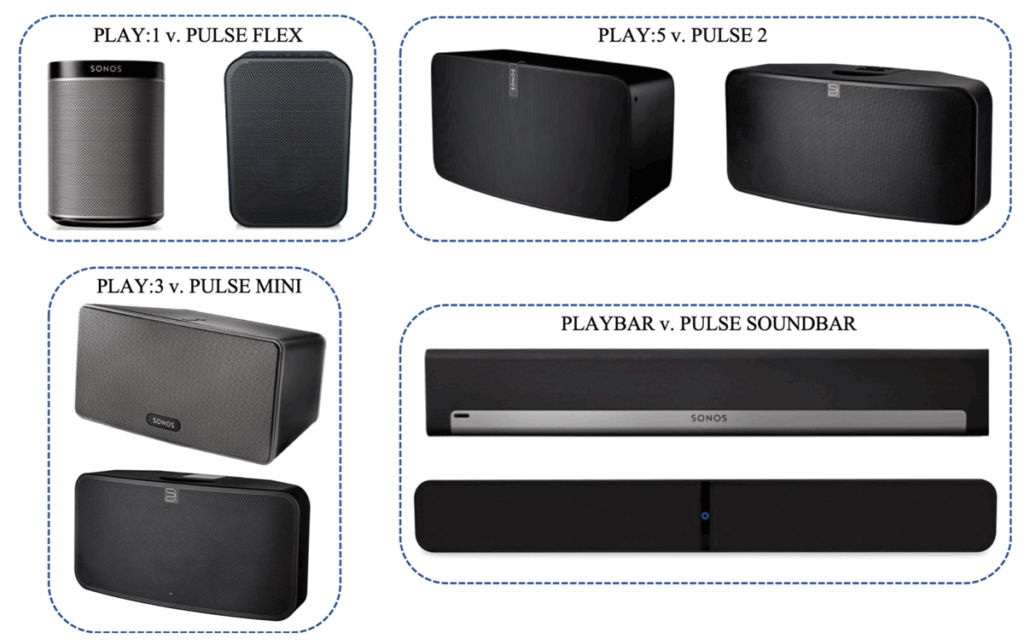
However, Lenbrook may have scored some points when they show pictures of the products in a more 2- or 3- dimensional manner, which shows the Sonos model in a rounded off rectangle…while the Bluesound model has a distinctive hexagonal shape. Lenbrook provided photos from a variety of angles which clearly showed the dramatic differences between the Bluesound models and the Sonos models.
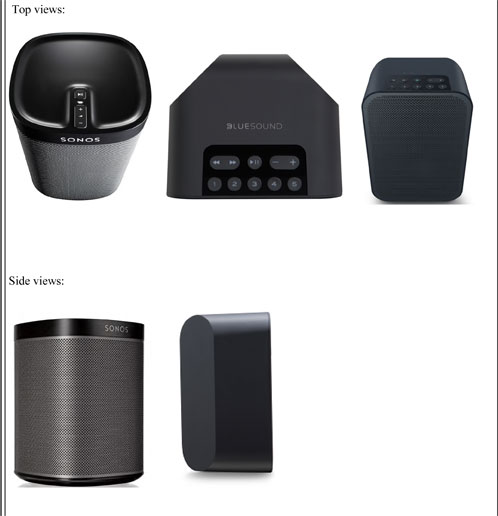
Lenbrook goes through this exercise with each model, suggesting in some cases that Sonos deliberately showed products taken from two different angels to give the false impression of similarity…when in fact, they are quite different. Sums up Lenbrook, “…the images of the comparison products in Sonos’s complaint are misleading.”
The Two Parties Previously Engaged in Licensing Discussions
We learn from this document that Sonos and Lenbrook had previously engaged in licensing negotiations. These took place in the wake of a November 1, 2018 letter from Sonos alleging patent infringement and demanding such licensing discussions. The two entered into a non-disclosure agreement in December – and the negotiations continued with an extension of the non-disclosure in May 2019.
Mysteriously, even though the parties had agreed to have a face-to-face meeting to negotiate a licensing deal “later in June or early July 2019,” on the evening of June 7th, Lenbrook received a letter terminating the non-disclosure agreement. This letter was followed by another one identifying more Sonos patents in dispute and adding them to the matter.
Discussions continued until June 13th when they were informed by the Sonos attorney the June or July meeting was off. One week later, this lawsuit was filed. Perhaps Sonos has a different take on the course these negotiations took – normally a licensor does not cut off negotiations. At least, that is, not if they are genuinely productive.
What May Be a Problem for Sonos
Perhaps the smartest thing that Lenbrook did in their response is they provided several examples of “prior art” of inventions that pre-dated inventions that Sonos was claiming a patent for. If these cases they cite hold up to a rigorous investigation, Sonos could lose their patents.
As I always say, I am not a patent attorney, so I have no idea. But I can say that if Lenbrook has done their homework – this lawsuit could become problematical for Sonos. However, if Lenbrook’s references don’t hold up, then they could lose the case much as D&M did.
This Could Get Interesting
Remember, the burden of proof is on Sonos to prove that Lenbrook willfully and knowingly violated Sonos patents. While they were successful in doing so with D&M Holdings – Lenbrook has taken a different and potentially impactful path of identifying other brands inventions that predate Sonos’ patents – thereby throwing those patents in doubt..
Have the tables been turned on Sonos? Is the prey now the predator? This could get interesting…
See more on Sonos by visiting: sonos.com.
Learn all about Lenbrook and its stable of brands at: Lenbrook.com.





Leave a Reply